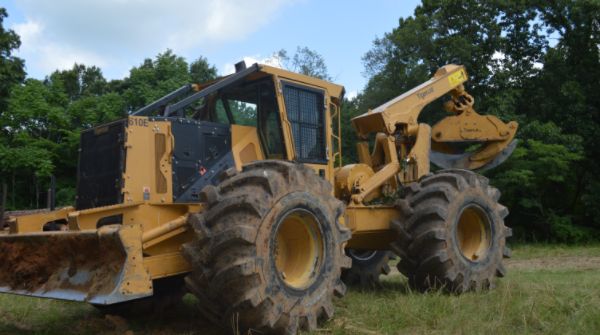Matthew Fagan, director of R&D at Maxam, discusses development of the MS931 LogXtra, the latest addition to the LogXtra forestry line. The product of a three-year program from approval to product release, the MS931 LogXtra was designed to provide an ideal solution for abusive forestry applications.
For Fagan, the aim for the development team – which included eight engineers – was to produce a tire with greater durability, compounding and traction. “The MS931 features a steel-belt stabilized construction, along with heavy-duty shoulder and sidewall thrives in harsh environments,” explains Fagan.
“A high-performance rubber compound was developed by the Maxam engineering group specifically for the LogXtra tread to maximize tire resilience in the working environment,” he adds. “To prevent bead winding defects and protect against mounting damage, the LogXtra goes through an enhanced bead wrapping process that has been developed and implemented during the manufacturing process.”
The result for Maxam is a tire that has one of the deepest and widest treads in the industry, a heavy shoulder and sidewall, and greater protection against cuts, impacts and punctures, thanks to the cut-resistant compound.
Development was managed out of the Maxam Tire North America office in Boston, MA; however, engineers from Canada, France, China and Vietnam contributed to the design and development.
“For the MS931 LogXtra, the physical testing process entailed static testing to measure deflection and footprint, tread and bead endurance testing and field testing, where the tires were placed into demanding forestry applications and tracked for six months,” added Fagan.
Maxam has said that the latest addition to its LogXtra range will be manufactured in Vietnam. However, Fagan believes that building the MS391 will come with challenges: “Typically nylon bias construction, Maxam forestry tires are steel-belted to increase resistance to impacts and punctures. This type of hybrid tire construction requires building equipment that would not otherwise be needed in standard bias or all-steel radial OTR tire production.”
The new tire required compounds specially designed for the forestry service. “Forestry applications are exceptionally severe due to the high traction requirements and high load on the tires,” notes Fagan. “In order to achieve high traction with extra deep tread lugs, the tire compounds must be specifically engineered for this application to avoid lug cracking.”



